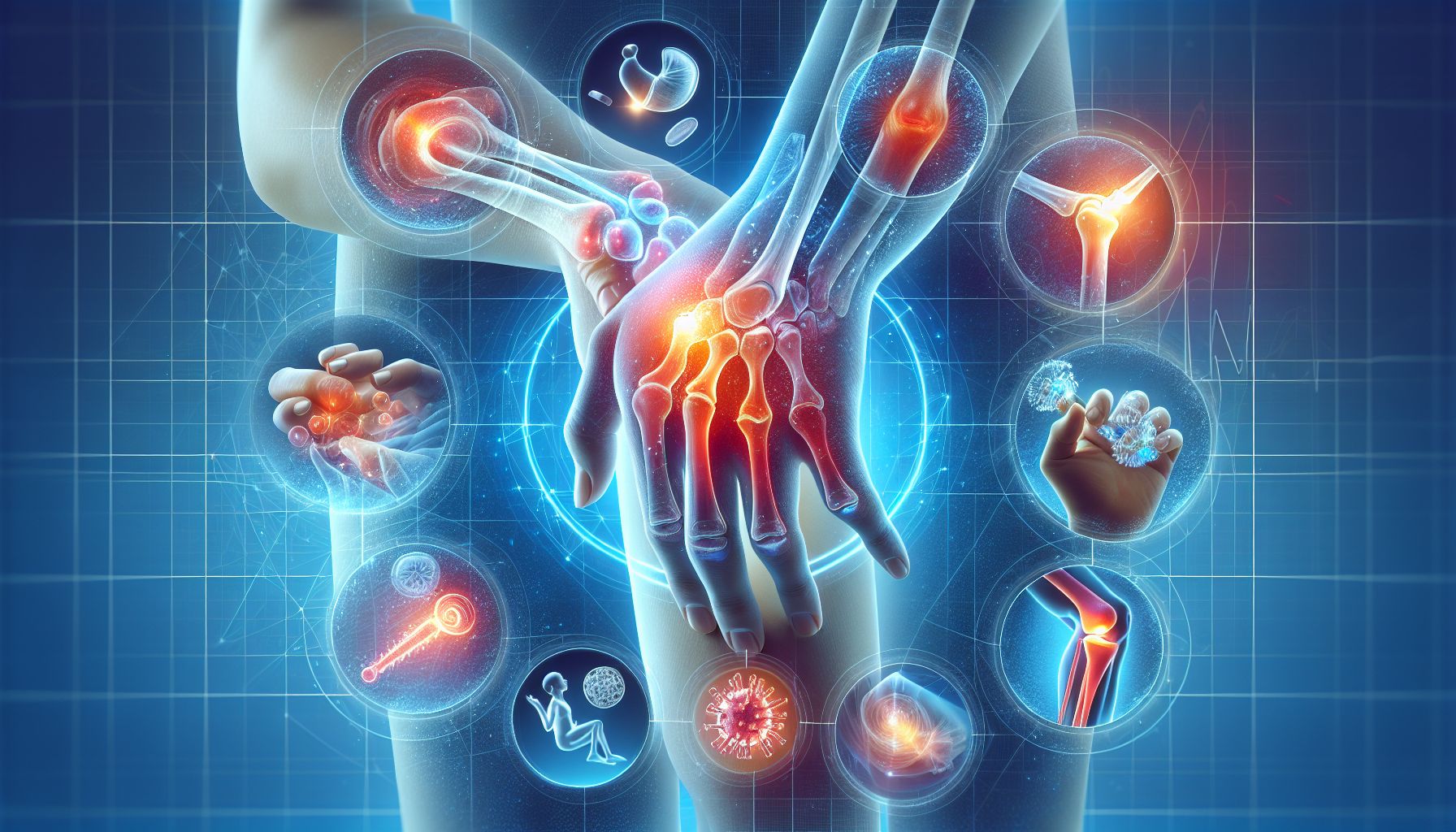
Understanding Arthritis: A Comprehensive Guide
Arthritis is a common condition that affects millions of people worldwide, causing pain, inflammation, and stiffness in the joints. This guide aims to provide a thorough understanding of arthritis, its types, symptoms, and available treatment options to help those affected manage their condition effectively.
What is Arthritis?
Arthritis is not a single disease but a term that refers to a group of more than 100 different types of joint diseases and conditions. It encompasses disorders that affect the joints, tissues around the joint, and other connective tissues. The most prevalent forms of arthritis are osteoarthritis and rheumatoid arthritis.
Osteoarthritis: The Wear-and-Tear Disease
Osteoarthritis (OA) is the most common form of arthritis, often referred to as a degenerative joint disease. It occurs when the protective cartilage that cushions the ends of the bones wears down over time. While OA can damage any joint, it most commonly affects joints in the hands, knees, hips, and spine.
Rheumatoid Arthritis: An Autoimmune Disorder
Rheumatoid arthritis (RA) is an autoimmune disorder that occurs when the immune system mistakenly attacks the body’s tissues, primarily affecting the lining of the joints. This leads to painful swelling and can eventually result in joint deformity and bone erosion.
Common Symptoms of Arthritis
The symptoms of arthritis can vary depending on the type and severity of the condition but generally include:
– Joint pain
– Stiffness, particularly in the morning or after inactivity
– Swelling
– Redness
– Decreased range of motion
Diagnosing Arthritis
Diagnosing arthritis typically involves a combination of physical examinations, patient history, and imaging tests such as X-rays, MRI, or ultrasound. Blood tests may also be conducted to identify specific types of arthritis, such as rheumatoid arthritis.
Treatment Options for Arthritis
While there is no cure for arthritis, several treatment options can help manage symptoms and improve quality of life. These include:
Medications
– Nonsteroidal Anti-inflammatory Drugs (NSAIDs): These medications help reduce pain and inflammation. Common examples include ibuprofen and naproxen.
– Corticosteroids: These can help reduce inflammation and suppress the immune system. Prednisone is a commonly prescribed corticosteroid.
– Disease-modifying Antirheumatic Drugs (DMARDs): These are primarily used for rheumatoid arthritis to slow disease progression. Methotrexate and hydroxychloroquine are examples.
– Biologics: These are newer treatments that target specific parts of the immune system. They are often used when DMARDs are ineffective.
Lifestyle and Home Remedies
– Exercise: Regular physical activity helps maintain joint function and relieve stiffness. Low-impact exercises like swimming and walking are beneficial.
– Diet: A balanced diet rich in anti-inflammatory foods, such as omega-3 fatty acids, can support joint health.
– Weight Management: Maintaining a healthy weight reduces stress on weight-bearing joints and can alleviate symptoms.
Physical Therapy
Physical therapy can be beneficial in improving mobility and strengthening the muscles around the joints, which can provide additional support and reduce pain.
Surgical Options
In severe cases of arthritis where conservative treatments are ineffective, surgical options such as joint replacement or joint fusion may be considered.
Expert Opinions
According to Dr. Jane Smith, a rheumatologist, “The key to managing arthritis effectively is early diagnosis and a comprehensive treatment plan tailored to the individual’s needs. Patients should work closely with their healthcare providers to determine the best course of action.”
Possible Side Effects of Arthritis Medications
While medications can be effective in managing arthritis symptoms, they may also have side effects, including:
– Stomach irritation or ulcers (NSAIDs)
– Increased blood sugar levels (corticosteroids)
– Liver damage or increased risk of infections (DMARDs and biologics)
It’s essential for patients to discuss potential side effects with their healthcare provider and report any adverse reactions.
Where to Buy Arthritis Medications
For those seeking reliable arthritis medications, our site offers a wide range of options. Visit our website to explore available products and make an informed purchase.
Conclusion
Arthritis is a complex condition with various forms and symptoms. Understanding the disease, its causes, and treatment options can empower those affected to take control of their health. By consulting with healthcare professionals and considering lifestyle modifications, individuals can manage their arthritis effectively and maintain a good quality of life.
For more information on arthritis and available treatments, visit reputable sources such as the Arthritis Foundation and the Centers for Disease Control and Prevention (CDC).
